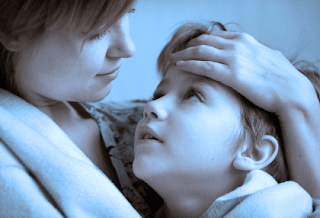Epilepsy is the occurrence of multiple seizures (fits), but not caused by high fever or recent head/brain injury. The brain as we all know uses electrical impulses for a lot of its activities. Sometimes, there is a sudden surge in electrical activity in the brain, which causes the seizures. Epileptic seizures are of multiple types. Some may be generalized seizures that occur when the surge of electrical activity affects the whole brain, while some are partial seizures in which only a part of the brain is involved. They manifest themselves in some of the common ways below.
Absence seizures - Petit mal (generalized seizure)
In this type of seizure, it appears that the child stops doing what they are doing. They stop moving or talking. Their face becomes blank. They seem to just stare. Often those around them may not even notice this seizure. These usually last less than 30 seconds. At the end of the seizure the child completely regains consciousness
and continues the previous activity.
Tonic clonic seizures - Grand mal (generalized seizure)
In this kind of epileptic seizure, the child's body becomes rigid (the muscles becomes rigid). The child usually falls down. The child's breathing becomes very strained and the child may start turning blue from lack of breath. This state usually lasts about 30 seconds and then the body muscles go through cycles of relaxation and rigidity. This makes the limbs of the body and the body jerk (When the words epilepsy or seizures or fits are occurred, this is the type of seizure that everyone thinks about). The child may urinate during this seizure as they lose control of their muscles. The rigidity and relaxation eventually stop. The child may be very dazed and may need to rest for a while before recovering. Sometimes the child may have to sleep for a few hours after this seizure.
- Partial seizures
- Partial seizures manifest themselves in various ways depending on which part of the brain is affected. They usually result in some type of unwilling strange behavior in the child who suffers them.
- Causes of epilepsy in children
- Severe head or brain injury
- Pre-natal problems that affected the brain
- Genetic issues
- Brain related illnesses like meningitis
- Family history is also a risk factor.
You might also like
More Baby Care Topics
















0 comments:
Post a Comment